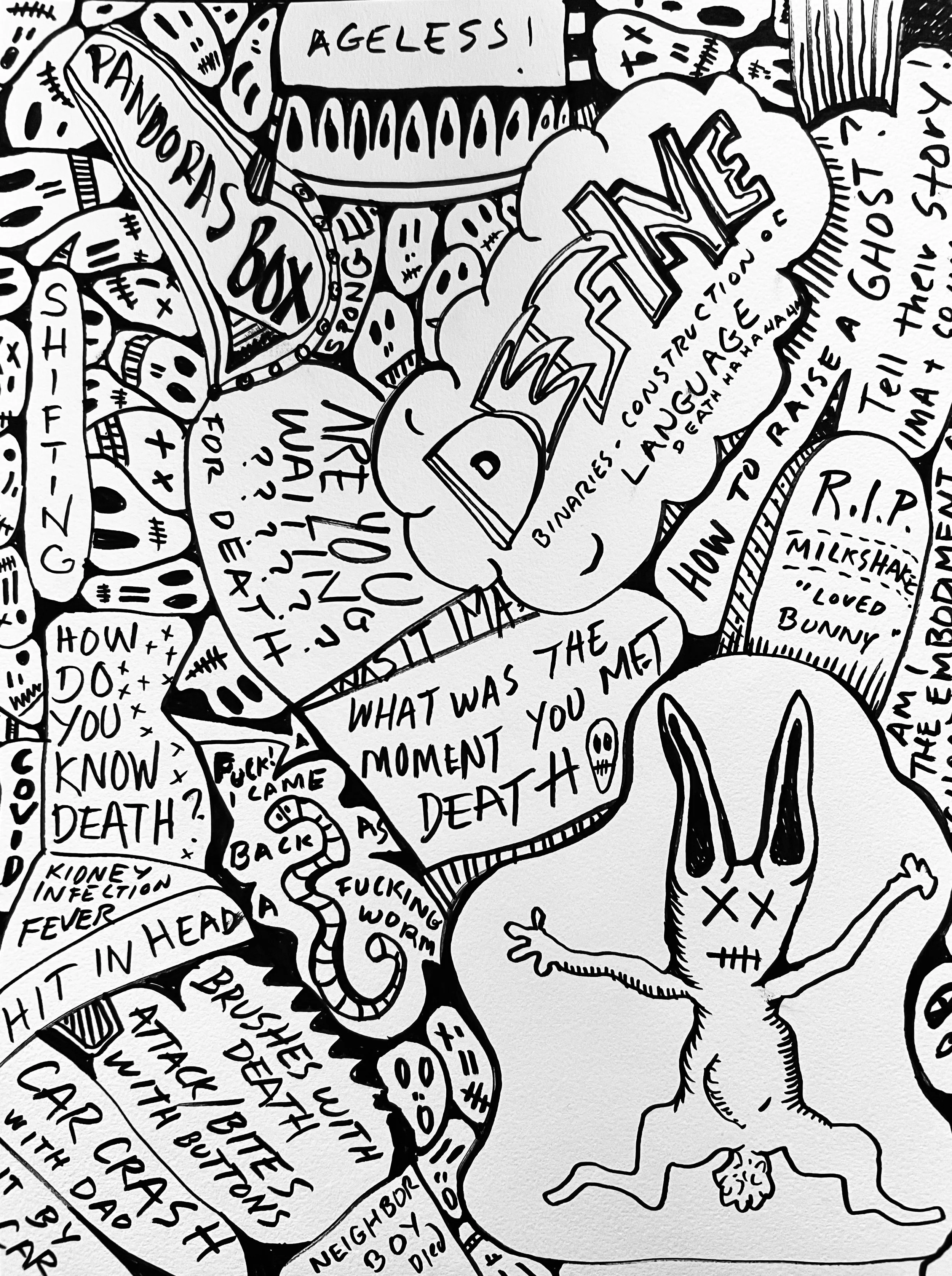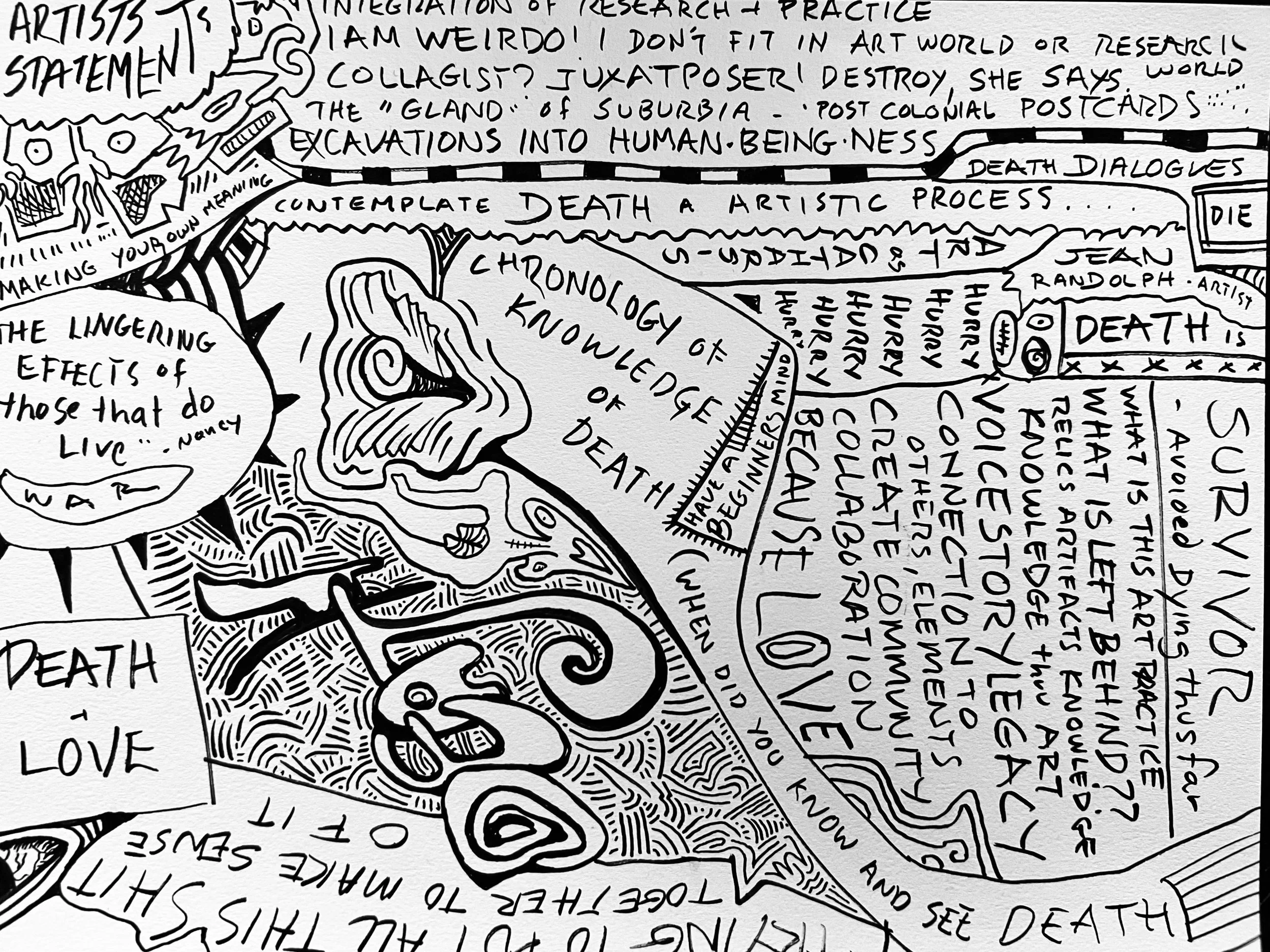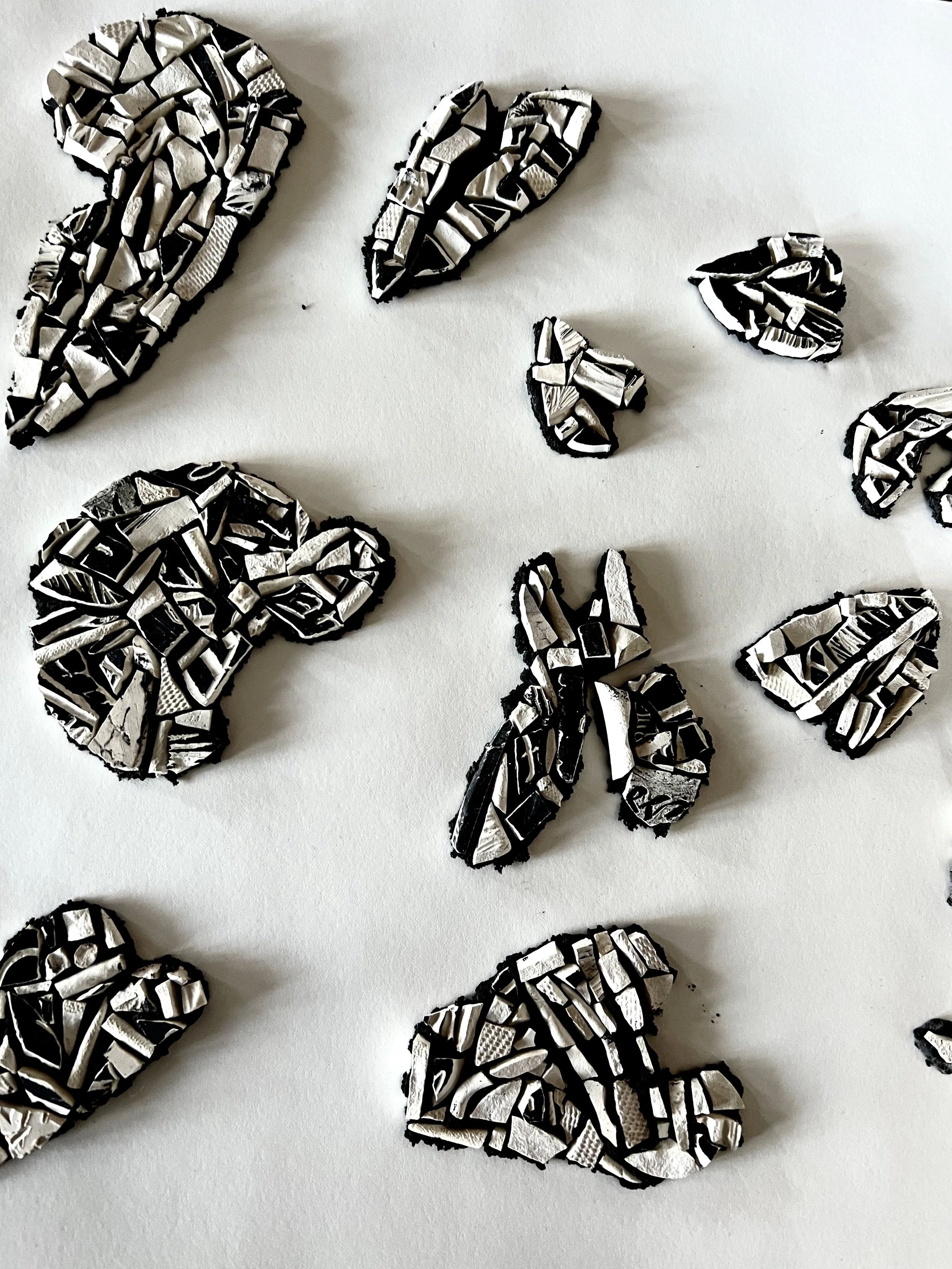Don’t Forget to Remember
Mourning Ma. 2022. Created after the Ars Moriendi Workshop. Instructions for GOOD MOURNING. Using drawing and notes form the Intensive led by Mia Van Leeuwen, this mosaic is created from clay pieces that were carved and inscribed and fired, then broken and applied to a form using thinset mortar. Based on a series of drawings for sensory prompts to mourn, this became a tablet guide for my sons, to laugh, to cry, to remember together their mother- a symbolic glue of connection to one another. Filled with visible and embedded information, this language I speak is familiar to them. Instructive and somewhat narrative, action (memory triggers) such as drawing ridiculous penises ( a family tradition), listening to and playing specific music both loved and reviled (by them), dancing, eating excellent cheese and specific red wines (they know), using hands for good and crying some. Inside the central matriarch is a glass tube filled with mourning instructions that cannot be accessed unless it is broken open. Break it and change it. Break it and heal.
Studio note: Using Kii’s Indirect Direct method to create individual elements (see below). Using my shards and scrap that I sweep into containers form my work table, I created several organic, heart forms that I embedded with broken script on the top section of the piece. I see great potential in this approach, rather than individually cutting and placing each tesserae directly to the work. This method allows another avenue to develope forms upon forms and embed contrasting textures to the surface of a substrate.
Experimenting with fragmentation.
So many broken hearts in the world
Reading Blog for Tracings , April 2022
I appreciate taking a closer look at some of Michael Bowdidge’s dissertation, ‘SURVEYABLE BY A RE-ARRANGEMENT’: WITTGENSTEIN, GRAMMAR AND SCULPTURAL ASSEMBLAGE - it's something that I am going to need to pore over more in depth in the future. There are many parallels in my questions about my own particular art practice which is quite similar in some regards to assemblage and my inquiry through practice-based research. There is so much useful (and enlightening) information in Michael’s paper that I hope will guide me as I try to find focus. There’s so much to unpack here!
My own perspective comes from that as an assembler-maker of sorts, noting that both practice based research is, a piecing together of related and non related information creating intentional relationships, in form, conception and theory.
Claude Levi- Strauss’ description of the ‘approach’ Bricolage as “ always to make do with ‘whatever is at hand’ and ‘elements are collected or retained on the principle that ‘they may always come in handy’’ is partial mosaic-art-process mentality. Bricolage- as a practice in contemporary art, I can argue, differs from a formal definition of mosaic. In Bricolage - a creator uses materials that happen to be around, handy, or easily collected (hoarded?) to be used to construct something. Michael’s phrase - “contingent discrimination” is an exciting description for material art processes, no matter what arrt medium, and it is one that I follow in my construction of work. In principle, it is CURATION.
-Using the structure of language to compose and construct as in assemblage or building an artwork form parts or elements
Wittgenstein critiques an essentialist view of language: “For they see in the essence, not something that already lies open to view and that becomes surveyable by a re-arrangement, but something that lies beneath the surface. Something that lies within, which we see when we look into the thing, and which an analysis digs out”. Isn’t he literally talking about language? :)





